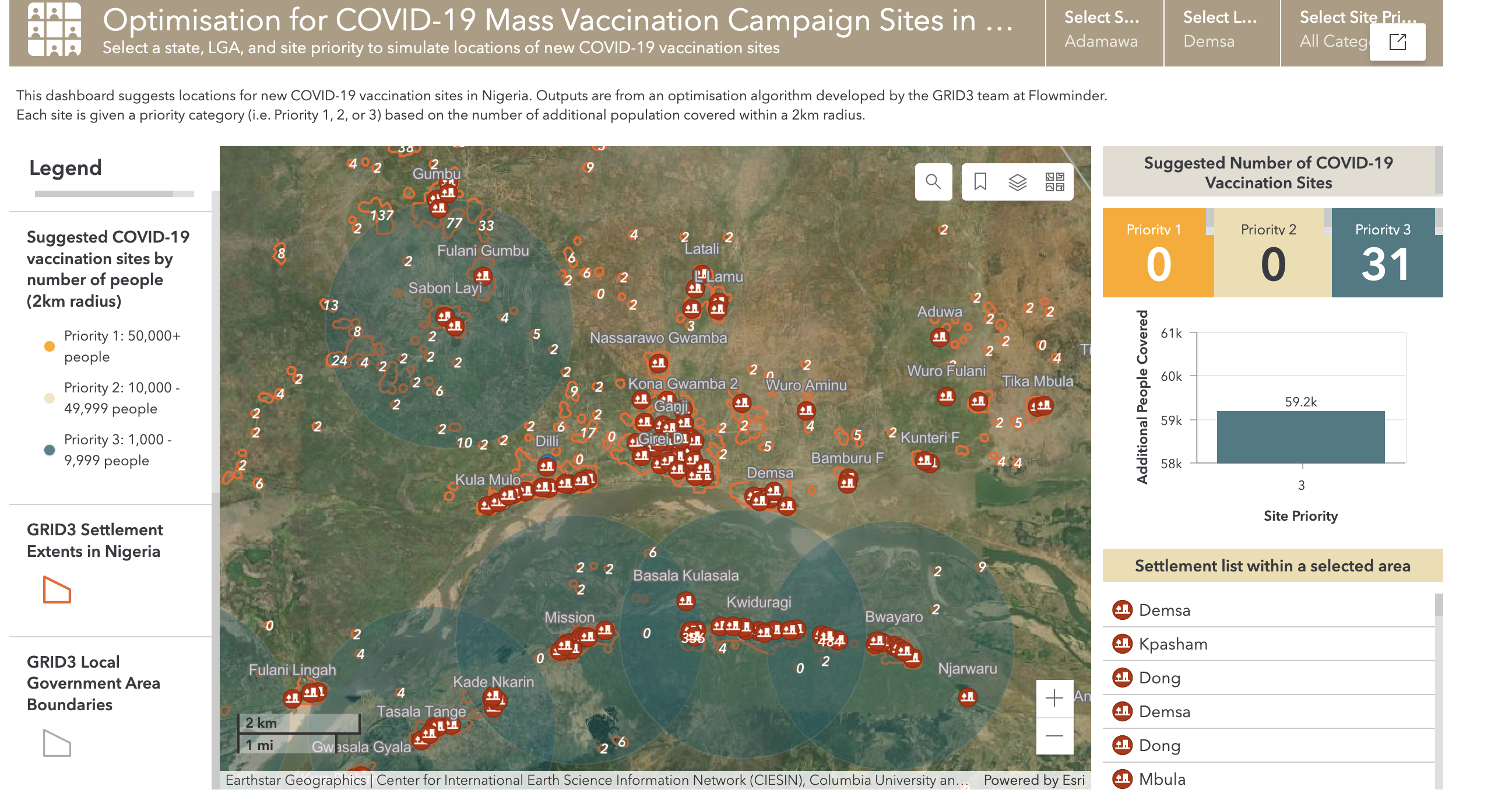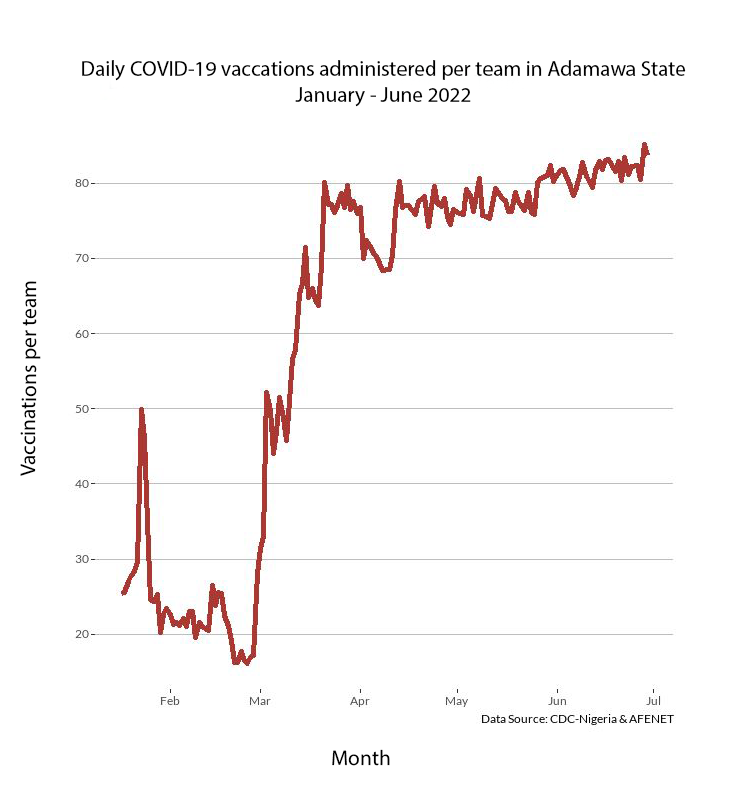CDC Nigeria and GRID3 collaborate to improve vaccination coverage
During the pandemic, Nigeria’s National Primary Healthcare Development Agency (NPHCDA) was charged with implementing the country’s COVID-19 vaccination mandate through the coordination of mass vaccination campaigns. In 2021, low and inconsistent COVID-19 vaccination rates were observed, presenting a significant challenge for the country.
To understand why there was low vaccine uptake, NPHCDA partnered with Center for Disease Control Nigeria (CDC Nigeria). This institution conducted national studies between July and August 2021. The findings revealed a lack of confidence in vaccines and issues around access to vaccination services as major reasons.
Using this information, CDC Nigeria, with the support of African Field Epidemiology Network (AFENET) and Sydani, began helping NPHCDA in late 2021 to increase COVID-19 vaccination rates in priority states (Adamawa, Benue, Borno, Ekiti, Kwara, Niger, Osun, Plateau, and Yobe). These organisations supported NPHCDA by overseeing the collection and analysis of vaccination-related data.
Aware of GRID3’s previous support of mass COVID-19 vaccination campaign, NPHCDA began discussions with GRID3 again between November and December 2021 to determine additional ways of using geospatial data to support health workers in identifying locations where mobile vaccination stations could reach large numbers of people that might otherwise be missed.
In response, GRID3 made an openly available ‘Optimisation for COVID-19 Mass Vaccination Campaign Sites in Nigeria’ dashboard that enables users to easily visualise GRID3 data (such as population estimates, settlements, and existing health centre locations). It also visualises the placement of potential new vaccination sites (using a site placement optimisation algorithm by GRID3 partner Flowminder).
The ‘Optimisation for COVID-19 Mass Vaccination Campaign Sites in Nigeria’ dashboard displays GRID3 data on settlements (outlined in orange), boundaries, settlement locations (in red), and population (counts/numbers within the settlement extents). The dashboard also visualises potential locations for new vaccination sites (buffers in blue). To learn how to use the dashboard to support COVID-19 vaccination efforts, please read this guidance note.
Integrating GRID3 data into vaccination plans
In early 2022, the dashboard was presented by NPHCDA at a COVID-19 Strategy Group meeting where international organisations with country offices in Nigeria, such as CDC Nigeria, were in attendance. Dr. Hadley Ikwe, a Senior Immunisation Specialist at CDC Nigeria, saw the value of the dashboard. He noticed how GRID3 population estimates and settlement data could be used to prioritise efforts within daily implementation plans (DIPs, a series of documents produced and used by health staff each day to determine where they plan to cover and how many vaccines they should try to administer). With this purpose in mind, Dr. Hadley spent time familiarising himself with the dashboard and then he, with support from AFENET and Sydani, met with state/Local Government Area Immunisation managers and COVID-19 vaccination teams to train them on how to use the tool within their vaccination planning process.
‘The dashboard made it very easy to visualize, use and understand the data even though I am not a GIS expert. I was able to intuitively make vaccination planning-related decisions from it,’
explains Dr. Hadley.
Then, on 04 March 2022, immunisation managers and vaccination teams began integrating the tool into their decision making. Using the dashboard, they were able to prioritise areas with the highest population estimates. Health facility staff used this information to determine how many vaccination teams to assign to various settlements. For example, areas with larger population numbers were sent bigger vaccination teams to ensure maximum vaccination coverage.
The impact on vaccination coverage
Since the introduction of the GRID3 dashboard into the DIPs at the beginning of March 2022, six of the nine states (Adamawa, Kwara, Osun, Plateau, Ekiti, and Yobe States) have exceeded the national target vaccination rate of 70% vaccination rate, set by NPHCDA.
For example, in Adamawa State, the number of vaccines administered nearly tripled:
Dr. Hadley and NPHCDA believe GRID3 data were critical to the daily vaccination planning process:
GRID3 is proud to have supported NPHCDA’s vaccination efforts. To access GRID3 data, visit our Data Hub.


